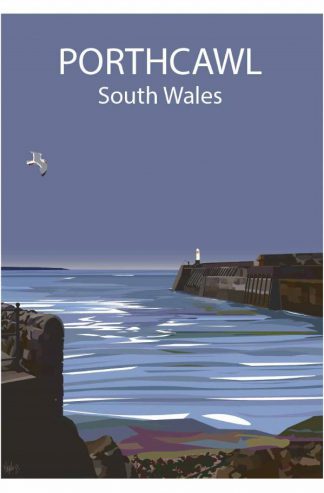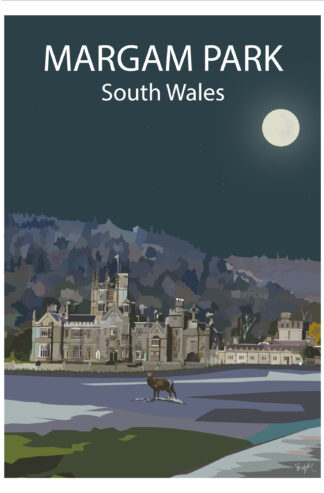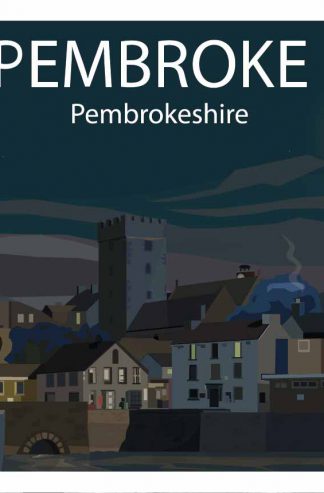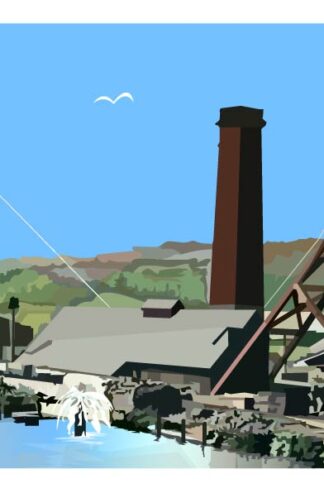Description
Garth Colliery Art Print. Here is a picture I created of Garth Colliery in the Llynfi valley near Maesteg, South Wales.
Before the 19th century, Garth like much of the Llynfi Valley was a rural area with sparsely populated farmhousesand labouring settlements. With the opening of two ironworks at Maesteg at the start of the century, the gradual industrialization saw the construction of villages in the area, including Garth. Garth built up as a series of terrace houses to the east of the larger settlement of Maesteg. This was located on the eastern bank of the River Llynfi, mainly to provide home for the labourers of the emerging coal industry at two local collieries Garth and Oakwood.[1]
In 1864 John Brogden & Sons leased the land at Garth and bought Garth Fach and Cwmdu Canol Farms.[1] On that land they sank a colliery in 1865 and constructed a large number of coke ovens at the surface.[1] An underground explosion occurred at the mine in 1867, and although no one was injured the mine was closed for a year.[1] The company continued to work the mine until the long depression forced the mines closure in 1877. The mine re-opened under the ownership of the Tondu and Ogmore coal and Iron company.[2] But by 1884 it again swapped hands, form this point being run by the Garth Merthyr Colliery Company. In an 1896 report by the Inspector of Mines, the colliery is named as the Garth Merthyr Colliery and was recorded as employing 504 men, extracting both house and steam coal.[2]
On 11 June 1897. nine men and boys were killed in a colliery disaster caused by a cage drop. The cage carrying the men leaving their shift overwound as it reached the top causing the cable lifting the cage to snap. There was nothing left to support the cage and plummeted 350 yards to the bottom of the shaft. Five men and four boys were killed instantly.[2] It was reported that one man, Thomas Rees, survived the accident after being pushed out of the cage before it began its ascent.[3]
The proximity of the Garth and Oakwood mines saw them link underground from 1901. The Garth pit was used as the downcast shafts and the Oakwood as the upcast shafts to provide ventilation for the miners of both collieries.[2] Oakwood, which also began work in 1864, had its pithead located to the west of the River Llynfi.[4] Although not located in Garth, the Oakwood Pit explosion of 1872 which killed 11 repairers, included members of the Garth community.[4]
In 1908, at its peak, the Garth colliery had a workforce of 1,075. The number of people employed gradually decreased over the next two decades, with 730 in 1918 and 688 in 1923.[2] In 1930 Garth Colliery closed for good, two years after the cessation of mining in nearby Oakwood.[2][4]
Thanks for looking. Always appreciated.








Reviews
There are no reviews yet.